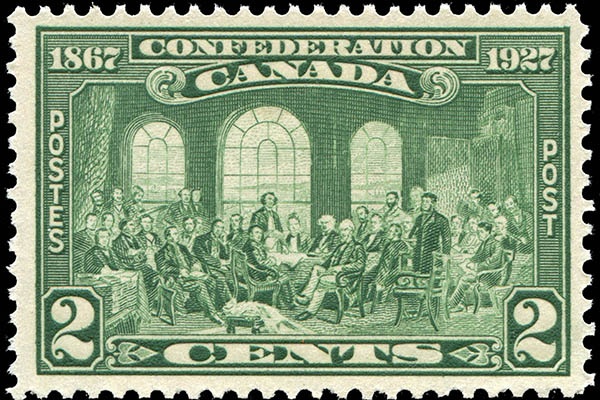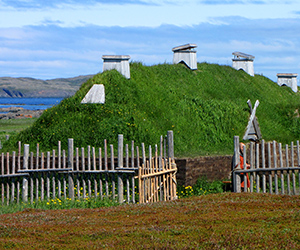CANADA HISTORY
Fathers of Confederation

The Fathers of Confederation were a remarkable group of political leaders who played a crucial role in shaping the foundation of Canada as a united country. They are often referred to as the architects of Confederation, as they were responsible for developing and advocating for the plan that would bring together the separate British North American colonies into a federal union under a shared government. Their work laid the groundwork for the creation of Canada in 1867, transforming a series of individual colonies into a single country while ensuring that each region retained a degree of autonomy within the larger political framework.
To be considered a Father of Confederation, an individual must have participated in one of the three key conferences that led to the creation of Canada. These conferences were the forums where debates, negotiations, and compromises were held, ultimately leading to the Confederation. The three major conferences were:
The Charlottetown Conference (1864)
The Quebec Conference (1864)
The London Conference (1866)
These conferences brought together political leaders from various British North American colonies, who discussed the terms of union and developed the framework for a new political system that would unite their regions under one central government. Although Confederation officially began in 1867, not all colonies joined at that time. Some, such as Manitoba, British Columbia, Prince Edward Island, and Newfoundland, joined later. This resulted in the expansion of the list of Fathers of Confederation, as political leaders from these regions who played key roles in their entry into the Confederation were recognized for their efforts.
The Charlottetown Conference – 1864
The Charlottetown Conference, held in September 1864 in Prince Edward Island, was initially organized to discuss a potential Maritime Union involving Nova Scotia, New Brunswick, Prince Edward Island, and possibly Newfoundland. However, representatives from the Canadas—Canada West (modern-day Ontario) and Canada East (modern-day Quebec)—persuaded the attendees to broaden the scope of the discussions to include the possibility of a larger union that would encompass all the British North American colonies.
This conference was attended by key figures such as John A. Macdonald, Georges-Étienne Cartier, George Brown, and Alexander Galt from the Canadas, as well as Charles Tupper of Nova Scotia and Leonard Tilley of New Brunswick. These men articulated the advantages of a larger Confederation, including economic growth, enhanced defense capabilities against external threats (particularly from the United States), and the potential for a more stable government. The Charlottetown Conference marked the beginning of serious discussions about Confederation and set the stage for the Quebec Conference later that year.
The Quebec Conference – 1864
The Quebec Conference, held in October 1864, was the second major meeting that further developed the framework for Confederation. This conference focused on creating the constitutional structure that would govern the new country. The delegates at the Quebec Conference hammered out the details of the federal system, in which powers would be divided between a central national government and regional provincial governments. This structure was seen as the best way to address the diverse needs and interests of the various colonies, particularly given the cultural and linguistic differences between Canada East and Canada West.
At the Quebec Conference, the 72 Resolutions were drafted, outlining the key principles of Confederation. These resolutions became the foundation of the British North America Act, which would eventually be passed by the British Parliament in 1867, officially creating the Dominion of Canada. The conference also addressed other important matters such as representation by population, the structure of the House of Commons and Senate, and the division of powers between the federal and provincial governments.
Key figures at the Quebec Conference included Macdonald, Cartier, Tupper, Tilley, Brown, and Hector Langevin. This group worked together to iron out the details of the future union, ensuring that the new country would have a political structure that balanced the interests of both the English-speaking and French-speaking populations, as well as the smaller provinces.
The London Conference – 1866
The final conference, held in London in 1866, was the culmination of years of discussion, negotiation, and planning. The London Conference was essentially the last step before Confederation became a reality. The key delegates traveled to Britain to finalize the details of the union and seek the approval of the British government. At this conference, the delegates refined the 72 Resolutions and transformed them into the British North America Act.
The British North America Act, also known as the BNA Act, was passed by the British Parliament in 1867 and came into effect on July 1st of that year, officially establishing the Dominion of Canada. The act outlined the structure of the new government, including the federal system and the division of powers, and laid the groundwork for future growth and expansion as other colonies and territories would eventually join Confederation.
Importance of the Fathers of Confederation
The Fathers of Confederation were vital to the success of the Confederation project. These men were the driving forces behind the creation of a united Canada, and their vision of a larger political union was key to overcoming the challenges of political gridlock and economic stagnation in the individual colonies. Their ability to navigate the various political, cultural, and regional interests allowed them to craft a federal system that has endured for over 150 years.
The Fathers of Confederation were not only focused on the immediate political concerns of their time but also on creating a system that could grow and evolve. By crafting a federal union, they ensured that the new country would have a flexible and adaptable political structure. This foresight allowed for the eventual entry of other regions into Confederation, such as Manitoba in 1870, British Columbia in 1871, Prince Edward Island in 1873, and Newfoundland in 1949. As each new province joined the union, additional leaders, such as Joey Smallwood, the premier of Newfoundland, were recognized as Fathers of Confederation for their role in expanding the country.
The Fathers of Confederation were also instrumental in securing a peaceful transition to nationhood. In contrast to other countries that were born out of revolution or war, Canada’s formation was largely a diplomatic process. The Fathers of Confederation were committed to maintaining ties with Britain while seeking greater autonomy for the new country. This careful balance between loyalty to the British Crown and the desire for greater self-governance helped to smooth the path to Confederation.
Legacy of the Fathers of Confederation
The legacy of the Fathers of Confederation endures in Canadian politics and identity. The federal system they designed continues to be the foundation of Canada’s political structure, allowing for regional diversity while maintaining national unity. Their efforts also laid the groundwork for Canada's bicultural nature, with special recognition of French and English cultures. This legacy is enshrined in the Constitution, which has been a cornerstone of Canadian governance since 1867.
Moreover, the Fathers of Confederation set an example of negotiation, compromise, and consensus-building, values that have become hallmarks of Canadian politics. Their ability to bring together diverse political leaders from different regions and backgrounds to create a unified country is a testament to the power of diplomacy and dialogue.
In conclusion, the Fathers of Confederation were more than just political leaders; they were nation-builders. Through their efforts, they created a new country, a political system that accommodated diversity, and a vision of Canada that has endured for more than a century and a half. Their legacy is not only reflected in the political institutions they helped to create but also in the enduring idea of Canada as a federation of provinces united by common goals, shared values, and mutual respect for regional differences. Their work continues to shape Canadian identity and governance to this day.
- Adams Archibald (Nova Scotia)
- George Brown (Canada)
- Alexander Campbell (Canada)
- F B T Carter (Newfoundland)
- George-Etienne Cartier (Canada)
- Edward Barron Chandler (New Brunswick)
- J C Chapais (Canada)
- James Cockburn (Canada)
- George Coles (PEI)
- Robert Dickey (Nova Scotia)
- Charles Fisher (New Brunswick)
- Alexander Galt (Canada)
- John Hamilton Gray (New Brunswick)
- John Hamilton Gray (PEI)
- T H Haviland (PEI)
- William Henry (Nova Scotia)
- W P Howland (Canada)
- John Johnson (New Brunswick)
- Hector Langevin (Canada)
- A A Macdonald (PEI)
- John A Macdonald (Canada)
- Jonathan McCully (Nova Scotia)
- William McDougall (Canada)
- Thomas D'Arcy McGee (Canada)
- Peter Mitchell (New Brunswick)
- Oliver Mowat (Canada)
- Edward Palmer (PEI)
- W H Pope (PEI)
- John William Ritchie (Nova Scotia)
- Ambrose Shea (Newfoundland)
- William H Steeves (New Brunswick)
- Sir Étienne-Pascal Taché (Canada)
- Samuel Tilley (New Brunswick)
- Charles Tupper (Nova Scotia)
- Edward Whelan (PEI)
- R D Wilmot (New Brunswick)
Cite Article : www.canadahistory.com/sections/documents




